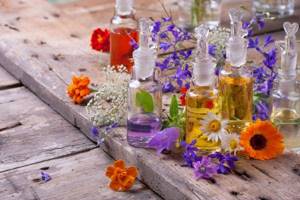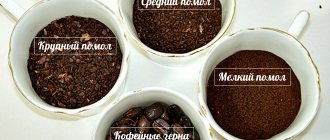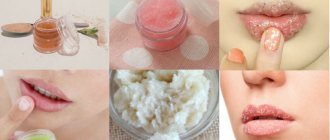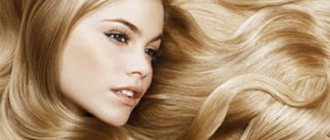If you have ever bought high-quality perfume in a store, you know about its high cost. But you should also know that the ingredients for the perfume you buy only cost about 10% of the final price. All other costs associated with packaging, manufacturer's profits, advertising and taxes! Would it be much better if you invested your money in a truly natural scent that you could easily make yourself? The advantage of making your own perfume is that you will be sure that there will be no preservatives or chemicals on your skin that can cause dryness or allergic reactions, in addition, they retain their scent much longer!
The choice of perfumes in general is based on the following concept: “if you were a perfume, what would they be?” Although some essential oils are not too cheap, there is no need to worry. In order to create a whole bottle of luxurious, expensive perfume, you only need a few drops of these essential oils. In addition, your perfume with the scent of rose, jasmine or others, unlike those sold in stores, will contain natural essential oils of these plants.
It is important to make sure that you are not allergic to the plants from which essential oils were made before using them directly in perfumes!
The perfect perfume is the one you make yourself!
I can’t believe it, but by the beginning of the 20th century. Without exception, all perfumes were natural. Cleopatra herself, one of the most beautiful women, also became famous for skillfully creating perfumes with her own hands, the exotic and refined aromas of which became part of the queen’s magical charm. But the rapid development of chemical science and industry made its own adjustments to the perfume industry - synthetic products appeared.
*For example, perfumes made from the same flowers, but collected at different times, will naturally have a different aroma, but synthetic ones, of a particular brand, will always smell the same.
However, the growing popularity of aromatherapy, a fairly large selection of essential oils and a healthy lifestyle have again awakened interest in the almost forgotten art of natural perfumery - hand-made perfumes.
Just think that you can make any kind of perfume with your own hands at home - oil perfumes, solid perfumes, alcohol and alcohol-free perfumes, deodorants, eau de toilette, perfume pencil and perfume cream, and certainly the created aroma will be unique, because even the smallest little thing affects him.
The main advantage of such natural compositions is the unique opportunity to invent your own scent, unlike others, by playing with various combinations of essential oils. Also, natural perfumes necessarily have a healing effect, since aromatic oils have an extremely positive effect on the human body. Some relieve fatigue, lift your spirits, others balance the general condition of the body as a whole, and also fight stress.
Tips for making and storing homemade perfumes
You don't have to spend a ton of cash to smell good. Now that you have a bunch of exciting perfume recipes to try, here are a few tips you should keep in mind when creating and storing your creation.
- Set up the right workstation – it doesn't have to be anything fancy, but a clear chart where you can easily measure ingredients is important.
- Buy glass bottles with airtight caps and spray nozzles before you begin your project.
- Always use pure alcohol or 100 proof vodka for your perfume because the higher the alcohol percentage, the better the result.
- It's best to only use glass containers and bottles when making your perfume because essential oils will break down the plastic, which in turn can destroy the oil.
- The effectiveness of your perfume depends entirely on the ratio of essential oils, alcohol and drinking water in your mixture - so make sure you measure well before adding anything because anything less or not enough will change the entire mark of your perfume.
- Perfume is like fine wine, and it must remain mature before it reaches perfection.
Making perfume at home is a skill and it gives you your own unique scent. You can avoid all synthetic chemicals and completely customize your scent to suit your personal scent. Plus, don't you agree that creating something with your own hands puts a little piece of you into it? This was our roundup of the top 15 homemade perfume recipes. Which one do you want to try? Share with us in the comments section below.
Types of handmade perfumes:
1. Oil perfumes (based on wax and oil) , as a rule, are more durable, but their aroma is subdued. They do not require long exposure; you can use them immediately after preparation.
2. Oil based also retain their aroma for a long time.
3. Alcohol perfumes - (alcohol-based) are more saturated and intense, but fade faster.
They also have a long infusion period: from 2 weeks to 3 months.
Basic perfume notes
The general principle of creating perfumes has one trick: the perfume contains three aroma notes, base, top and middle. They have differences that you should be aware of.
is of great importance in the entire composition as a whole. It is she who leaves the first and main impression; she is felt within half an hour after applying the perfume. A person feels the top note when opening a bottle of perfume. The initial note contains an aroma that evaporates quickly. This includes citrus oils, basil, verbena, rosemary, mint and lemon balm. Particularly fragrant perfumes usually contain an abundance of top note aromas, because they make the perfume brighter and more memorable.
Top note- The middle note is the heart of the entire composition; it can exude aroma throughout the day. Typically it includes oils of sage, jasmine, nutmeg, lavender, geranium, hyssop, cypress, chamomile, ylang-ylang.
- The base note is filled with persistent and heavy oils. The scent lingers on the skin constantly, differing as other notes in the scent evaporate. Base note oils are obtained from plant resins, roots, fruits, barks and spices. For example, it could be vanilla, ginger, patchouli, juniper, myrrh, sandalwood, cumin, cloves or frankincense.
Each fragrance note should contain no more than three types of oils, resulting in a total of nine essential oils in the perfume composition.
Important! Essential oils in their pure form cannot be used as perfumes! They often cause burns or allergic reactions. Aromatic components must be dissolved in a base of alcohol or high-fat oil.
There is a generally accepted ratio of notes that experts recommend:
- The top note should be 30%;
- The middle note makes up about half of the total composition;
- The bottom note is 20%.
Naturally, there is no need to maintain exact proportions, because when creating perfume, the final result should depend on the preferences and personal feelings of its owner.
Long lasting perfume recipe:
15-30% oil, 70-85% alcohol, and the rest, less than 5%, water. Use only distilled or spring water. The alcohol used should be high-quality vodka with 57% alcohol content; brandy can also be used, but its characteristic odor may alter the aroma of essential oils. If you want to add color, use a natural, high-quality vegetable dye.
The following oils are used as the basic components jojoba , cocoa butter, wheat germ, grape seed oil, olive, almond. Such oils do not have their own odors and are excellent solvents for essential oils and fixatives of their odors. These oils also moisturize the skin well.
On this basis, you will receive high-quality perfume in just a few minutes - just by pouring 1-3 drops of a mixture of selected essential oils into a container with one teaspoon of base components.
As a basic rule, you can add 1 drop of essential oil for every 4-5 ml. base oil (about half a tablespoon).
Essential oils pour out of the pipette very quickly, so practice with the pipette before preparing the mixture - this will save you from spoiling the mixture.
Handmade perfume structure _

When starting to make your own perfume, first learn the basics of structuring a perfume composition. Know that all classic perfume compositions are composed according to the principle of combining three main notes, each of which represents a specific aroma or a mixture of odors of varying intensity. And all together they represent three phases of smell:
1. head of spirits,
2. heart of spirits,
3. basis, or base of perfume.
When composing compositions, fragrance notes are mixed in a ratio of 1 : 2 : 3 . This means that a fragrance should consist of one part base note , two parts heart note and three parts main note . But this is not a strict rule, but just a rough guide.
The first phase ( the head of the perfume ) usually consists of perfume materials that evaporate quickly: nutmeg, basil, thyme, lavender, rosemary, bergamot, lemon, orange oil, cypress, peppermint, tea tree, etc. This top note in a composition is of great importance because it creates the first impression of the perfume and prepares us for the main aroma.
The second phase ( the heart of the perfume ) is the main aroma of the perfume. It connects the head and the base, and usually consists of materials that evaporate more slowly, which are combined in the composition, shading and complementing each other: sage, palmarosa, juniper, ylang-ylang, wild lily, jasmine, rose, myrrh, pine, rosemary, chamomile.
The third phase ( base, base ) of perfume consists of substances with a low evaporation threshold, which last on the skin longer than all fragrances. These are vanilla, tuberose, cassa, patchouli, cedar, sandalwood, incense. They also come with scents of fruit, musk, oriental spices, moss, and so on. Some essential oils sometimes move from group to group. The only necessary condition is that the integrity of the compositions is not violated.
These phases appear only in a certain sequence. Within 5-30 minutes the smell changes, and after several hours only “ heart note” . And after 12-24 hours, you will only smell “ base note” , which will remain that way until the aroma itself disappears. That is why choosing a scent slightly reminds us of planning the future: what will happen first , what will happen next , and what will happen at the very end .
how to make handmade soap here
Composition of home perfumes
Before you learn how to make perfume at home, here's what you need to know about the basics of perfume notes.
They are divided into three classes:
- Top Notes: Top notes represent the first impression of your fragrance. They tend to be the lightest of all notes and fade the fastest. The most common ones include citrus fruits, herbs, and light fruits such as berries.
- Middle notes: The “heart of your perfume,” or middle notes, appear after your top notes have evaporated. They last longer and have a strong influence on the base notes of the future fragrance. The heart can be anything from rose to lavender, from geranium to lemongrass.
- Base Notes: The final notes of a fragrance that appear after your top notes have completely evaporated are the base notes. They blend with the middle notes to create the full body of your scent. They are often rich in notes and linger for several hours. Common base notes include vanilla, musk, cedar, patchouli, and so on.
How to make perfume with your own hands?
To begin with, three oils will be enough for each of the phases (notes) of the aroma. But, for example, jasmine and rose flower oils are noticeably expensive. (It takes 5 tons of flowers to produce a kilogram of rose oil!) Therefore, until you decide which direction of fragrance you like, it is better to use accessible essential oils such as myrtle, geranium and ylang-ylang. In addition to essential oils, you will need a base or base (carrier). For these purposes, as already mentioned, alcohol or one of the following oils is suitable: jojoba, cocoa butter, wheat germ, grape seed oil, olive, almond. Oil-based perfumes are much more stable!
You will also need small containers to dispense and mix essential oils. The vessels can be anything - bottles, vials, cones with a volume of 10 ml or more. up to 100ml. Remember that they should be large enough for you to mix the oils comfortably. At the same time, these vessels should not be too large, because the less air that enters the vessel, the better.
In general, anyone who begins to engage in perfumery and study in detail the recommendations on how to make perfume with your own hands should acquire all the appropriate accessories:
– snuff paper strips of 10 cm;
– convenient containers for mixing components;
– pipettes for measuring the required amount of material;
– cute bottles into which the perfume will be poured.
To determine the aroma you will need sniffing paper strips. That is, strips of paper (or fabric or cotton wool), which absorb well, with which the aroma is usually tested. They are really necessary - if you “taste” the fragrance directly from the bottle, then you will not be able to feel all its nuances. One way to mix different essential oils is to soak various smelling papers with these essential oils. Then they determine whether the aromas fit together by evaluating their various combinations. This is how professional perfumers taste fragrances. Although you still won’t be able to understand what the final scent will be created. First, the final fragrant substances are diluted to a concentration of 4% to 25%, which naturally significantly changes the intensity of their odor. Secondly, any perfume (alcohol-based) must mature for 2-3 weeks in order for its final scent to form.
So, first take the base note (phase) that you like best. For example, patchouli oil. Patchouli is a very powerful and multi-faceted aroma. That is why it is better to combine it with any soft base note, such as vanilla. In the next step, apply one drop of patchouli to a paper snuff strip and one drop of vanilla oil to another. Bring them to your nose, crossing them, but not lining them up with each other. Evaluate whether you like this combination of scents, if you like it, apply the selected oils to a multi-layer napkin or handkerchief. Let at least half an hour pass. During this time, the oils will reveal all their notes. You will feel the depth, volume and magic of the scent you created. When your composition finds completeness and harmony, add both oils to the prepared dishes.
Try to document each step step by step, that is, write down the exact amount of each oil used for the perfume composition. You also need to write down the company from which you purchased the specific oil. Such documentation is, of course, not mandatory, but it will then allow you to reproduce the scent that you liked.
So, if the base note a heart note to it . Rose or geranium go well with patchouli. Patchouli combines well with ylang-ylang oil. It is quite possible to add blood orange as the main note
After you have mixed all the components of the perfume, you can fix the aroma with food grade vanillin, vanilla and benzoin. In the 19th century, musk and amber were used for this, but they are very expensive, and in many countries they are even prohibited for sale.
Next, the bottle of perfume must be placed in some dark place for 2-3 weeks to mature. It should be noted that the aroma of alcohol perfume will subtly change every day and even after this period. For this reason, many perfumers recommend leaving compositions for 2-3 months, and sometimes up to six months.
Only after the perfume has matured does it develop an aroma that will stay with it forever. The individual ingredients of a perfume will merge with each other in such a strange way that sometimes it will be difficult to discern what is included in the composition. Either way, the scent of the perfume will change and become complete. During the maturation of the aroma, you can add to your composition those components that you think are missing, or when one of them, on the contrary, manifests itself too dominantly.
About How to replace toothpaste? you can read here
Playing by notes
Aromatic essences are composed of volatile substances. This means that over time, the odor emitted by the liquid evaporates, leaving a perceptible trail. The best perfumes are those that have a long-lasting sillage “aftertaste”. The base for perfume is prepared from many components, which are opened one after another during the “wearing” process.
The aromatic base plays with three main chords.
Head note
The fastest disappearing, “sounds” no more than half an hour after contact with the surface of the skin. Peppermint, citrus, verbena or bergamot oils are commonly used here.

Heart note
Stores for 12-24 hours. It opens slowly, playing with all the aromatic notes at once, emphasizing each one. Ylang-ylang, tuberose, jasmine, geranium, myrtle and lemon balm oils are suitable for it.
Base note
After the “heart” disappears, the base plays the main chord. It flows in a dizzying trail, covering with warm and voluminous scents: cedar, patchouli, cloves, amber, musk, sandalwood and vetiver.
When making perfume for your home, you should remember that the optimal ratio of these parts is 2:1:3, then the aroma will be especially interesting and lasting.
Handmade solid perfume
If alcohol-based perfumes need to infuse for 3-4 weeks or more in a dark place, then you can start using solid perfumes made with your own hands immediately.
We are talking about perfumes based on wax and oil .
To prepare them, you need to take an odorless base oil. Coconut, almond, olive, jojoba, and vitamin E oils are excellent for these purposes.
1. Take oil and wax in a ratio of approximately 1 part wax to 2-2.5 parts oil (1 tablespoon wax and 2 tablespoons oil).
2. Heat the wax in a water bath, bring it to a liquid state and add oil. Mix the oil with wax, heat it and add a composition of essential oils. Mix your chosen essential oils in advance and add them directly to the base.
3. Stir everything with a thin stick and quickly pour it into the prepared form. After this, the mixture quickly hardens.
*This is how you make your own solid perfumes. When making them, you must also take into account that wax has its own smell. As an option, you can, of course, use purified wax. Or choose essential oils that blend very well with wax (citrus fruits, ylang-ylang). In addition, wax is an excellent fixative and retains odors for a long time.
Odor categories
All the aromas that surround us can be divided into families. Knowledge of these groups will help create an interesting and harmonious composition in perfume. The scents of essential oils are divided into the following categories.
- Citrus. Includes natural citrus fruit scents. Familiar aromas can create interesting scents when combined with floral and woody ones.
- Floral. These scents are often used in pairs in perfumery. Essential oils of this group will remind you of a bouquet of fresh roses or lilac blossoms. These scents are light and spring-like.
- Woody. They are distinguished by unobtrusive sweetness and tartness. Such scents are subtle and give the perfume a green freshness. This also includes soft but rich herbal scents.
- Fougere (fern). They are distinguished by their freshness. This family includes the heavy odor of oak moss, which is usually used to fix the overall aroma. Pink mint geranium can add a touch of freshness to a perfume product that lasts a long time.
- Eastern. Sweet and very sensual. These include musk and amber oils combined with tree bark, resin and vanilla. This category is considered one of the most ancient, and includes both women's and men's fragrances. The scents always have an earthy note and are discreet.
- Spicy. Similar to oriental ones, but more astringent. To create aroma, oils of cinnamon, pepper, ginger and other spices are combined.
- Chypre. Based on bergamot and oak moss. Such smells are considered classic for creating men's perfumes. If you combine chypre scents with citrus, you get a unisex perfume.
- Leather. These fragrances are those that combine floral scents with juniper oil and woody notes. Such mixtures are used to create men's perfumes. The aromas are reminiscent of the familiar smells of smoke, tobacco or fire.
- Aquatic. Reminds me of the smells of dew, fog, and summer rain. To create a composition, combine mint with herbal and citrus oils. This combination is the most difficult to prepare at home. Synthetic components are often used for the final result.











